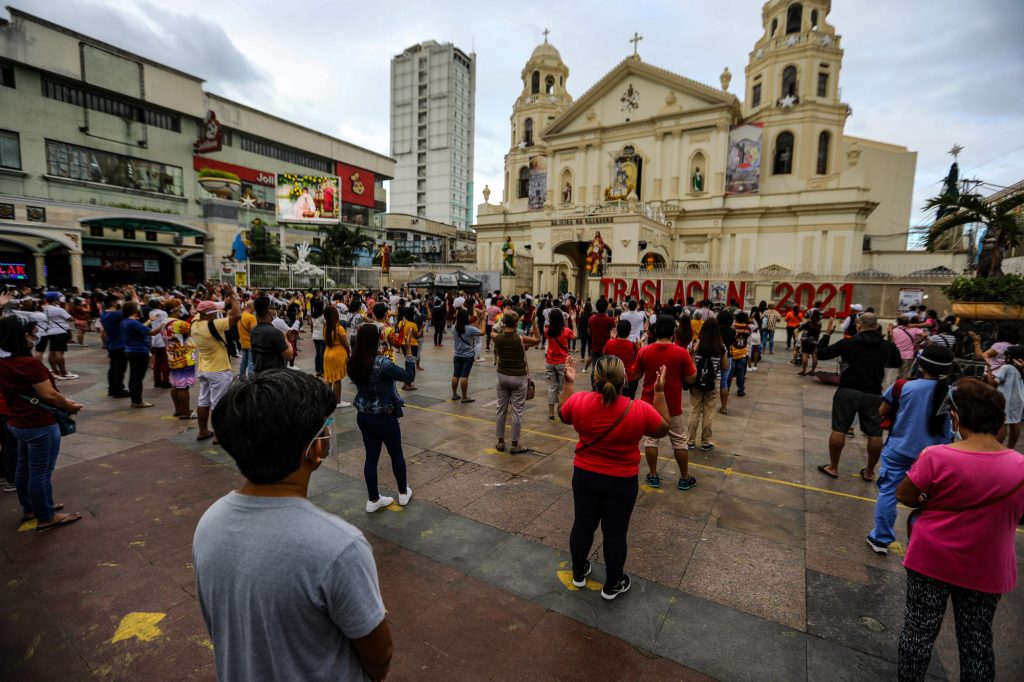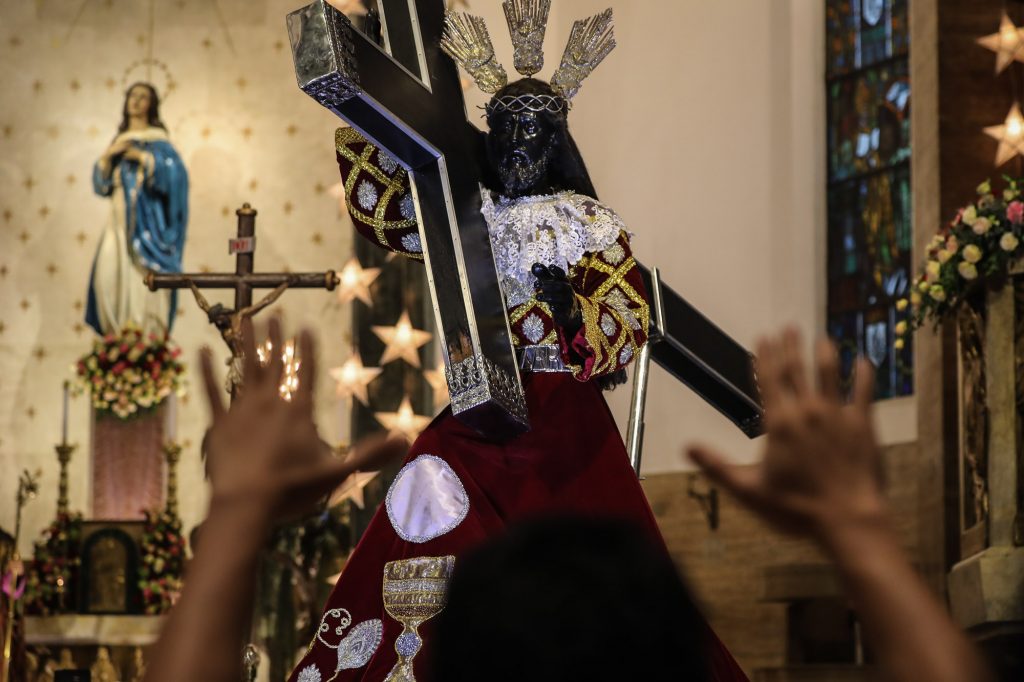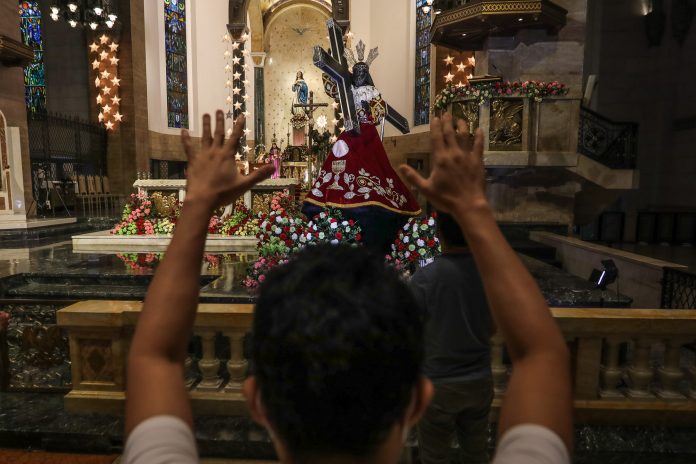The image of the Black Nazarene, which has been venerated by Filipino devotees for centuries, is making a tour in the Philippine capital and nearby provinces ahead of its “feast” on January 9.
At the Manila Cathedral on January 3, Monsignor Hernando Coronel said it was “a privilege” that the Black Nazarene was able to visit “the mother of all churches in the Philippines.”
The priest who serves as rector of the Basilica of the Black Nazarene in Manila’s Quiapo district said he personally requested the visit of the image to the cathedral.
“When the lockdown was starting, and even until now, among the districts in Manila that recorded no deaths is Intramuros,” said the priest.
The monsignor said it was a “miracle” that people should be thankful for.
Intramuros is the old-walled city of Manila that was destroyed during the Second World War.
“May we have a heart that is amazed, thankful, and attracted to the miracles shown by the Black Nazarene,” said Monsignor Coronel.
The “pilgrimage” of the image of the Black Nazarene is one of the activities this year to mark the anniversary of the “traslacion,” or “transfer” of the image from a church in the old Manila to the church in Quiapo district in 1787.
The traditional religious procession that attracts millions of people every year and usually lasts up to 20 hours has been canceled this year due to the pandemic.
The “traslacion,” which most Filipinos dubbed as the “feast” of the Black Nazarene, is one of the biggest religious celebrations in the country with an estimated 10 million devotees flocking to Manila every year.
The “pilgrimage” of the image in lieu of the religious procession will bring the Black Nazarene to nearby provinces before going back to the church in Quiapo on January 9.

Guilmer Tulliao, 26, a worker at the Manila Cathedral and a devotee of the Black Nazarene, said he was “happy and sad” about the cancellation of the “traslacion.”
He said that for years he would climb the carriage carrying the image during the procession to help devotees touch or wipe the face of the Nazarene.
“This year, something seems lacking,” he said. He said, however, that it was only this year, during the visit of the image to the cathedral, that he was able to see and touch the image’s face.
“It’s always the cross that I see,” said Tulliao.
Manolito Zapanta, 55, another devotee who usually serves as a marshal during the “traslacion,” said he is “disappointed” by the cancellation of the traditional procession.
“It is sad that we can’t share His suffering, His sacrifice for us,” he said. But said the pandemic also reminded him that his devotion is beyond the colorful celebration.
“To even just look at the Black Nazarene and be able to pray to Him is enough for now,” he said. “I know He will understand.”
Zapanta became a devotee of the Nazarene when his wife was confined in a hospital for five days 15 years ago.
“I prayed hard to the Black Nazarene to save my wife,” he said. “Since then, there’s no prayer He did not hear.”
The image of the Black Nazarene was supposedly made by a Mexican sculptor and was brought to Manila via a galleon from Acapulco, Mexico, on May 31, 1606.

Traditional accounts attribute the color of the image to votive candles burning before the image, although the most famous story is that it was charred by a fire on the galleon that brought it from Mexico.
The image was first enshrined in the Church of San Juan Bautista of the Augustinian Recollects in Bagumbayan in Manila until it was demolished in 1644.
In 1608, the image was transferred to the church of San Nicolas de Tolentino (popularly known as the “Recoletos Church”) inside Intramuros.
It was enshrined in the high altar until both the church and the image perished as a result of the bombardment and the flames of Manila during its liberation in 1945.
On Jan. 9, 1787, the Augustinian Recollects donated a copy of the image to the church in Quiapo. It started the tradition of the “traslacion,” or “transfer” of the image from the church of San Nicolas de Tolentino to Quiapo.









